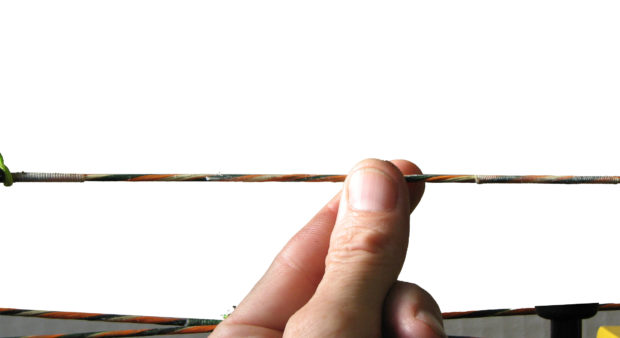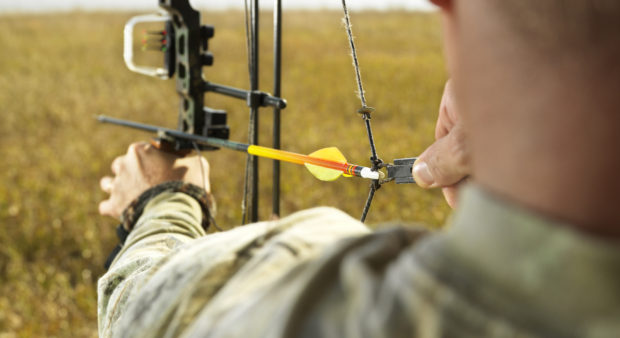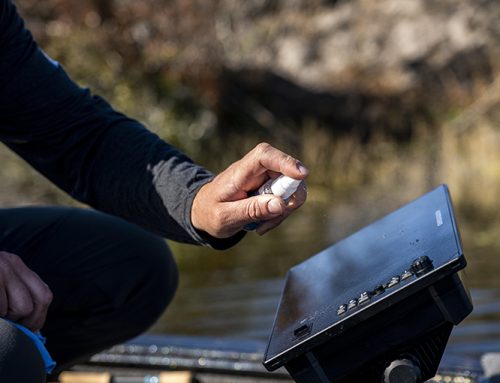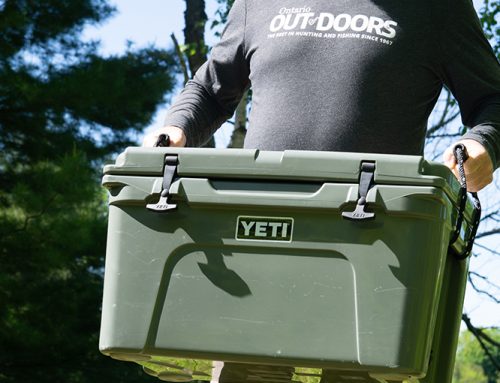Your bowstring is likely the last thing on your mind as you draw on that buck you’ve been hunting all season. But, has anything changed since opening day, when all was in perfect tune and condition? Probably. As the component solely responsible for transferring the potential energy of your bow into the kinetic energy of your arrow, your bowstring is subjected to tremendous forces with every shot. Even when not shooting, a compound bowstring is in constant flux as it’s moved from one environment to another: warm, cold, dry, wet, sunlight. All of these conditions can affect the state of your string.
In the Beginning
When your bow is new, before you even draw it, be smart and measure and record the axle-to-axle length, brace height, cam rotation, string gap, and draw weight. This allows you to return the bow to the exact specs as received from the factory. Too late for that? Record those same measurements after the bow has been tuned and is shooting well. Unless you bend something or have a limb go bad, your string set will be directly responsible for any change in these measurements, so having a record allows you to make intelligent adjustments. Marking your cams gives you an instant way of checking without measuring.
 Measure your string gap. The author has also marked the cams beside the limb, as a quick way to check for changes in the string set.
Measure your string gap. The author has also marked the cams beside the limb, as a quick way to check for changes in the string set.
In this photo, the timing mark is away from the edge of the limb, indicating adjustments are necessary. Even a small change in cam rotation can have a huge impact on arrow flight, especially with broadheads.
The Fix is In
If the cam marks tell you that something has moved, start measuring. Usually, you will find that axle-to-axle length is longer and brace height is shorter. This will also result in a loss of draw weight. First, add twists to your cable(s) to bring the axle-to-axle length back to spec, then add twists to the string to correct cam rotation and draw length. Avoid removing twists.
Serving Separation
Keep a close eye on your servings to make sure they’re not coming apart, especially where the corresponding cam track has a small radius. Serving separation exposes string fibres to wear, so must be repaired or replaced immediately.
Waxing Well
 Whenever the string looks dry or fuzzy, apply a small amount of string wax and work it into the strands with your bare fingers. Don’t wax the servings, and don’t allow wax to build up over time. Use just enough wax to keep the string moist and lubricated. Keep wax away from your cable-guard rod.
Whenever the string looks dry or fuzzy, apply a small amount of string wax and work it into the strands with your bare fingers. Don’t wax the servings, and don’t allow wax to build up over time. Use just enough wax to keep the string moist and lubricated. Keep wax away from your cable-guard rod.
Don’t use a piece of leather to apply wax. If there’s too much heat and friction for your fingers, it’s also too much for the string material. Never apply heat to a bowstring with a hair dryer or heat gun!
As in this photo, work wax into string fibres with your fingers. Modern string materials don’t like heat, whether from a small appliance or generated through friction.
In the End
Most bow manufacturers recommend replacing strings and cables yearly. This is probably good advice, assuming a complete lack of maintenance and the low quality of some strings. A good-quality string that’s well maintained should easily last twice as long for the average shooter. Always replace cables with the string. They’re subject to at least as much stress as the string, especially on a one-cam bow. Fresh strings and cables are cheap insurance against the severe bow damage that usually occurs when a worn string breaks.
When you do need replacements, there are several custom string makers in Ontario, from basement operations to internationally recognized manufacturers with years of experience.
Modern bowstrings don’t require much in the way of maintenance, but a few minutes of care and attention every week will assure your equipment performs as expected at the moment of truth. The rest is up to you. Good luck!







Leave A Comment